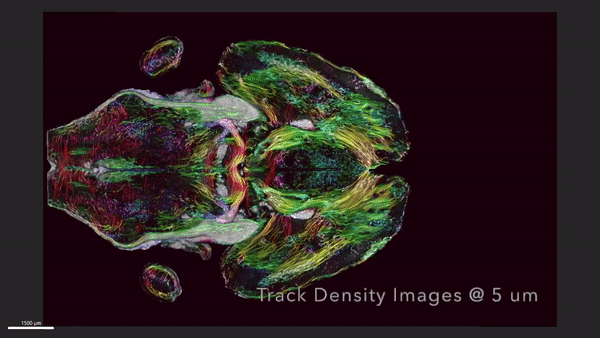Brain imaging just took a massive leap forward. After decades of work, scientists have managed to produce magnetic resonance imaging (MRI) scans of a mouse brain that are a whopping 64 million times sharper than can currently be achieved. The unprecedented level of detail in these images could help us to visualize conditions affecting the brain in a whole new way.
The first MRI scan was described 50 years ago, in March 1973. It was a landmark moment in medical history. MRI scanning is used every day to help diagnose and assess patients with diseases in many different areas of the body, but the technique has almost become synonymous with research into brain disorders.
Clinical MRI is undeniably useful for the diagnosis of conditions like brain tumors, but it can only go so far. To be able to see the complex organization of brain tissue in microscopic detail, some serious improvements needed to be made.
The new images, the culmination of decades of research led by a team at the Center for In Vivo Microscopy at Duke University, are 64 million times sharper than clinical MRI scans. This was achieved by using a much more powerful magnet within the scanner – 9.4 Tesla, compared with the usual 1.5 to 3 Tesla – gradient coils that are 100 times stronger than those in a normal MRI machine, and a vast amount of computing power.

The intricate circuits within the brain are revealed in horizontal slices. Image credit: Duke Center for In Vivo Microscopy
Just as a two-dimensional image can be divided up into single points called pixels, MRIs can be reduced to their constituent three-dimensional voxels. With the new technique, each voxel is 64 million times smaller than we’ve seen before, measuring only 5 micrometers.
It’s a little like comparing the 8-bit graphics of the 1985 Nintendo Entertainment System classic Super Mario Bros. with the computer animation of the 2023 Super Mario Bros. Movie.
The study authors tried out the new technique on a mouse brain. After the MRI scan was completed, the tissue was also imaged using a complementary method called light sheet microscopy. Overlaying both of these images has allowed the team to visualize the internal wiring and connections within the brain in glorious, rainbow-colored detail.

Feast your eyes on this unparalleled detail. Image credit: Duke Center for In Vivo Microscopy
But the images don’t just look amazing. Being able to see brain tissue in this way has the potential to revolutionize how we study the central nervous system. One example that the authors highlight is research into aging.
“It is something that is truly enabling. We can start looking at neurodegenerative diseases in an entirely different way,” said lead author G. Allen Johnson in a statement.
So far, one set of images has documented changes in the connectivity across the brain as the mouse ages, mapping how some regions change more than others. Another set of images, taken in a mouse model of Alzheimer’s disease, illustrates the breakdown of neural networks.
If medical intervention can help animals to live longer, Johnson explained, having access to such detailed images will help us explore whether the brain can continue to support the aging body.
“So, the question is, is their brain still intact during this extended lifespan? Could they still do crossword puzzles? Are they going to be able to do Sudoku even though they’re living 25 percent longer? And we have the capacity now to look at it. And as we do so, we can translate that directly into the human condition.”
The study is published in Proceedings of the National Academy of Sciences.
Source Link: These Are The Most Detailed Scans Of A Mouse Brain Ever Taken